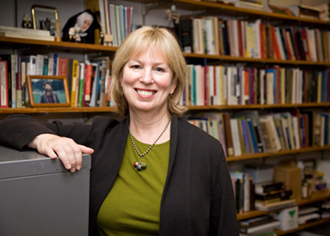A Black Nurse, a German Soldier and an Unlikely WWII Romance
The New York Times
2013-05-14
Alexis Clark
The nurse and the soldier may never have met – and eventually married – had it not been for the American government’s mistreatment of black women during World War II.
Elinor Elizabeth Powell was an African-American military nurse. Frederick Albert was a German prisoner of war. Their paths crossed in Arizona in 1944. It was a time when the Army was resisting enlisting black nurses and the relatively small number allowed entry tended to be assigned to the least desirable duties.
“They decided they were going to use African-Americans but in very small numbers and in segregated locations,” said Charissa Threat, a history professor at Northeastern University who teaches race and gender studies.
Ms. Powell was born in 1921 in Milton, Mass., and in, 1944, after completing basic training at Fort Huachuca, Ariz., she was sent, as some other black nurses were, to tend to German prisoners of war in Florence, Ariz.
“I know the story of how they met,” said Chris Albert, 59, the youngest son of Elinor and Frederick Albert. “It was in the officers’ mess hall, and my father was working in the kitchen. He kind of boldly made his way straight for my mother and said: ‘You should know my name. I’m the man who’s going to marry you.’”
Frederick Karl Albert was born in 1925 in Oppeln, Germany. “He volunteered for the paratroops to impress his father, who served in WWI,” Mr. Albert said. “His father was an engineer and not really interested in his children. My dad ended up getting captured in Italy.”…
…The American military officially ended segregation after WWII, but for the Alberts, the issue of race would resurface throughout their lives. Their unlikely romance resulted in Stephen’s birth in December 1946. After Frederick was able to return to the United States, he and Elinor married on June 26, 1947, in Manhattan.
“I would say the first 10 years for my parents were a struggle to find some kind of economic security and a safe haven for an interracial family,” said Chris Albert, who plays the trumpet with the Duke Ellington Orchestra.
“They moved to Boston and my father worked several jobs,’’ he said. “At some point, he decided it was best if they moved to Göttingen, Germany, where his parents lived. He could work for his father’s cement manufacturing business.”
But Kristina Brandner, 70, a niece of Frederick Albert, said life in Germany was difficult. “Göttingen is a small town,’’ she said. “My grandmother never had contact with black people so it was strange and uncomfortable for her with Elinor. Kids used to ask me how come there was a black woman living with us, and why is your cousin another color. Sometimes, I saw Elinor in the kitchen crying.”
In less than two years, Frederick, Elinor, Stephen and Chris, who was an infant, returned to the United States….
Read the entire article here.



